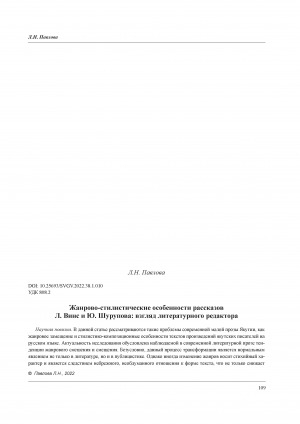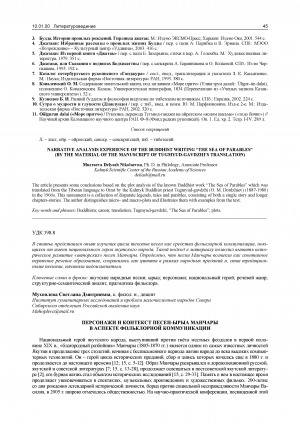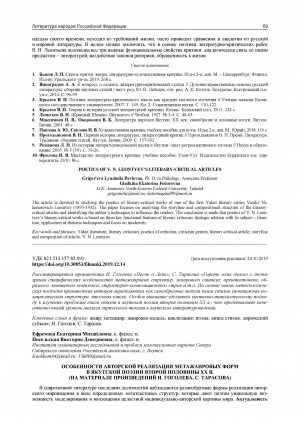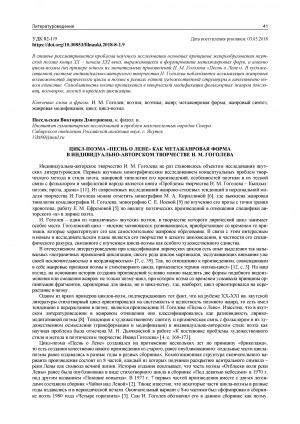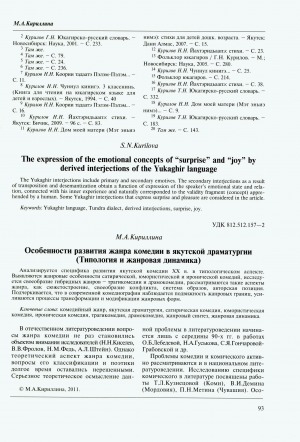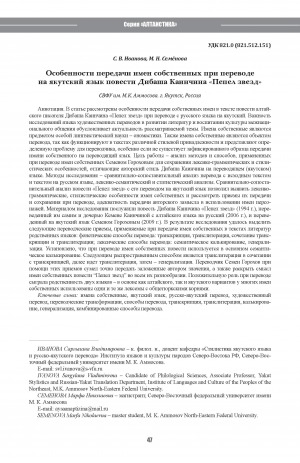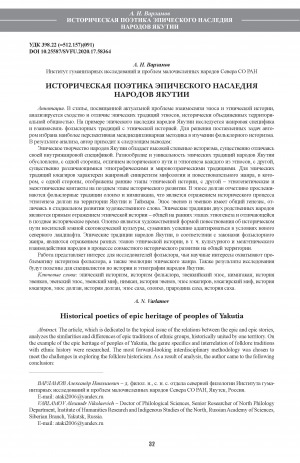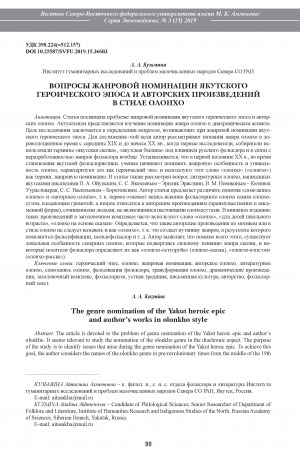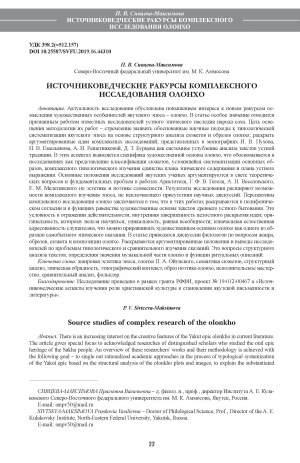Роман Е. Слепцовой-Куорсуннаах "Вселенская буря", посвященный трагическим судьбам национальной интеллигенции, анализируется в предлагаемой статье с точки зрения художественной специфики. По жанровой природе это синтетическое произведение, сочетающее черты романа эпопейного типа с семейной хроникой, имеющей документальную основу. Хотя повествование в романе строится вокруг клана Оросиных, его отличительной особенностью является изображение сложной полифонии индивидуальных судеб и характеров, которые не сливаются в единую массу, а порождают реальное многообразие. Так, крупным планом возникают образы таких исторических фигур, как В. В. Никифоров-Кюлюмнюр, А. И. Софронов-Алампа, П. А. Ойунский, В. Д. Давыдова. Изображение реальных перипетий их частной жизни не только подтверждает романный характер произведения Куорсуннаах, но и свидетельствует о присутствии в нем черт психологической "жанровой генерализации". В этом отношении удачным представляется, как показано в статье, использование автором среди способов освоения художественного материала литературных аллюзий и реминисценций.
The article analyses the artistic specificity in the novel "The Universal Storm" by Elena Sleptsova-Kuorsunnakh, dedicated to the tragic fate of the Sakha intelligentsia. By its genre nature, this is a synthetic work that combines the features of an epic novel with a document-based family chronicle. Although the narrative in the novel is built around the Orosin clan, its distinctive feature is the depiction of a complex polyphony of individual destinies and characters that do not merge into a single mass, but give rise to real diversity. The article features the images of such historical figures as Vasily Nikiforov, Anepodist Sofronov, Platon Oyunsky, and Vera Davydova. The depiction of the real The article analyses the artistic specificity in the novel "The Universal Storm" by Elena Sleptsova-Kuorsunnakh, dedicated to the tragic fate of the Sakha intelligentsia. By its genre nature, this is a synthetic work that combines the features of an epic novel with a document-based family chronicle. Although the narrative in the novel is built around the Orosin clan, its distinctive feature is the depiction of a complex polyphony of individual destinies and characters that do not merge into a single mass, but give rise to real diversity. The article features the images of such historical figures as Vasily Nikiforov, Anepodist Sofronov, Platon Oyunsky, and Vera Davydova. The depiction of the real.


